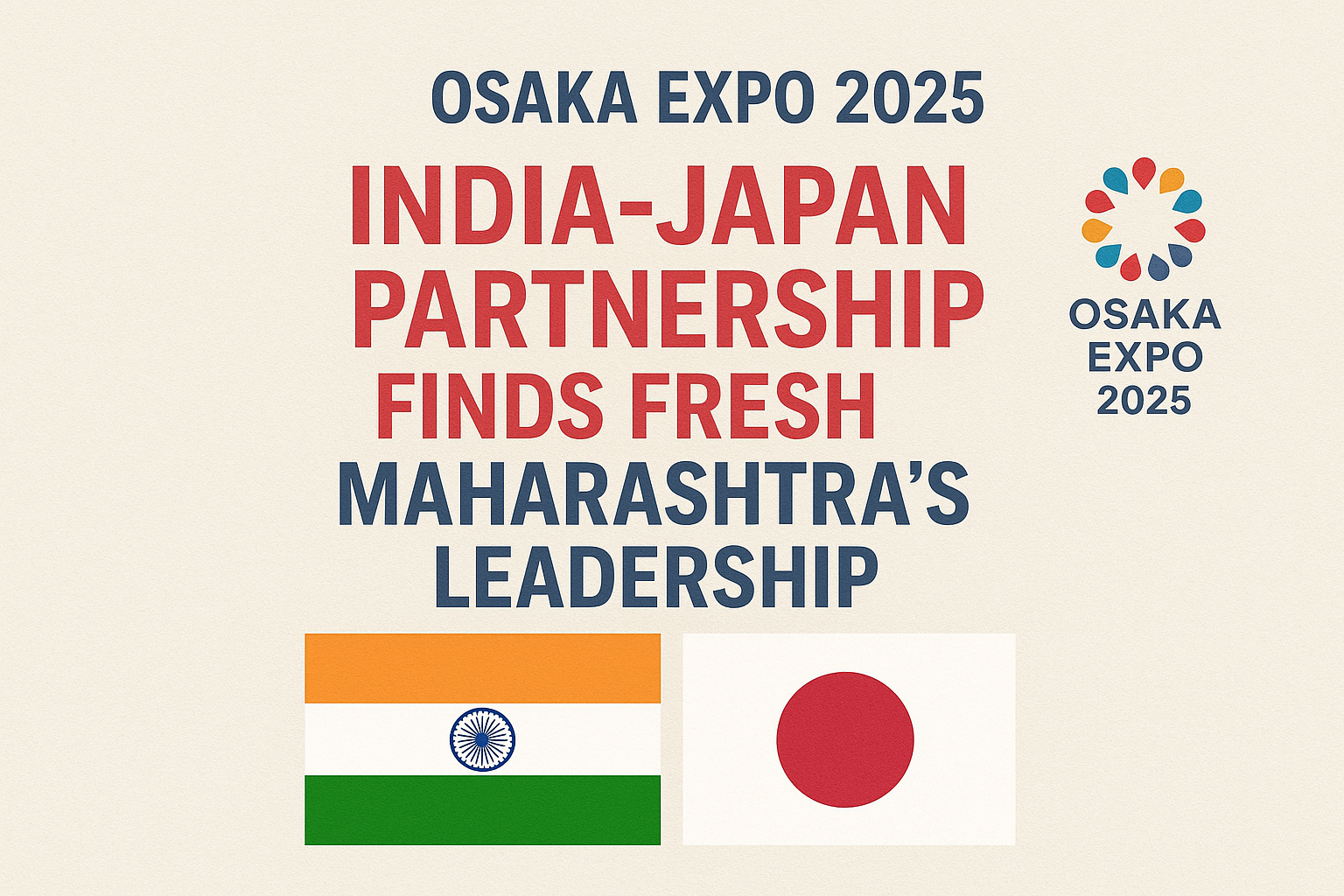
Osaka Expo 2025: India–Japan Partnership Finds Fresh Energy Through Maharashtra’s Leadership
The global spotlight is on India at the Osaka World Expo 2025, where the India Pavilion has become a hub for cultural exchange and economic dialogue. In a recent visit, Katsuyuki Ichimi, Governor of Japan’s Mie Prefecture, engaged with Maharashtra’s Minister of Industries, Uday Samant, underscoring the importance of deeper collaboration between the two nations.
A Symbolic Visit at the India Pavilion
Governor Ichimi’s visit to the India Pavilion was more than ceremonial; it reflected Japan’s growing interest in India’s economic progress and Maharashtra’s role as a driving force within it. Welcoming him, Minister Samant highlighted Maharashtra’s reputation as the country’s economic powerhouse, contributing the largest share to India’s GDP.
He pointed out that cities like Mumbai, Pune, Nagpur, and Nashik serve not only as industrial and commercial hubs but also as global centers of connectivity, technology, and innovation. The discussion opened avenues for renewed partnerships in manufacturing, technology exchange, and infrastructure.
Maharashtra’s Strong Ties With Japan
Currently, over 300 Japanese companies operate in Maharashtra, many of which are concentrated in Pune, a city that has emerged as the cornerstone of the Indo-Japanese industrial corridor. Pune’s ecosystem of automobile manufacturing, IT services, and research facilities aligns seamlessly with Japan’s strengths in engineering and precision technology.
In addition, Maharashtra has developed a dedicated industrial park at Supa-Parner for Japanese industries, reflecting its commitment to fostering an environment conducive to foreign investment. This initiative is designed to provide Japanese firms with plug-and-play infrastructure, reliable utilities, and supportive governance frameworks to accelerate business operations.
Shared Values Beyond Economics
While trade and investment dominate the headlines, Minister Samant reminded the gathering that India–Japan ties run deeper than economics. The relationship, he said, is rooted in a history of cultural exchange, shared traditions, and a foundation of mutual trust.
“India–Japan relations extend beyond economics; they are rooted in shared culture, traditions, trust, and friendship. With two nations and a common vision, this partnership will continue to grow stronger,” Samant remarked during the interaction.
This sentiment resonates strongly in the backdrop of the Expo, which serves as a platform to showcase not just business opportunities, but also art, heritage, and human connection.
A Strategic Opportunity at Osaka Expo
The Osaka World Expo 2025 has been positioned as a gateway for international cooperation, attracting countries to showcase innovations, foster business ties, and deepen diplomatic relations. For India, and Maharashtra in particular, the event offers a chance to project its strengths in manufacturing, renewable energy, technology, and culture to a global audience.
Maharashtra’s growing presence in global forums demonstrates its role as a state that goes beyond regional boundaries and acts as a bridge for international economic partnerships. With its thriving industrial corridors and investor-friendly policies, it is emerging as a preferred destination for Japanese companies seeking long-term growth in India.
Looking Ahead: Strengthening Bilateral Momentum
The discussions at Osaka underscore a broader trend: Japan’s increasing confidence in India’s market potential, and India’s willingness to adapt and innovate in response to global needs. As Japan looks to diversify its global footprint and India pushes ahead with its “Make in India” and digital transformation agendas, the partnership has significant room to expand.
Future cooperation is likely to include:
- Technology-driven manufacturing, particularly in automotive and electronics.
- Sustainable infrastructure projects, aligning with Japan’s expertise in green technologies.
- Cultural exchange programs, reinforcing people-to-people ties.
- Joint ventures in education and research, tapping into the knowledge economies of both nations.
Conclusion
The meeting between Governor Ichimi and Minister Samant at the Osaka Expo may appear as one among many diplomatic interactions. Yet, it symbolizes a renewed wave of India–Japan engagement, one that balances economics with cultural values and long-term trust.
As Maharashtra showcases itself as the industrial and innovation hub of India, its role in shaping bilateral ties with Japan becomes ever more prominent. The Osaka Expo is not just about pavilions and exhibits—it is about charting the future of international cooperation. And for India and Japan, the path ahead looks promising, with Maharashtra at the heart of this growing partnership.





